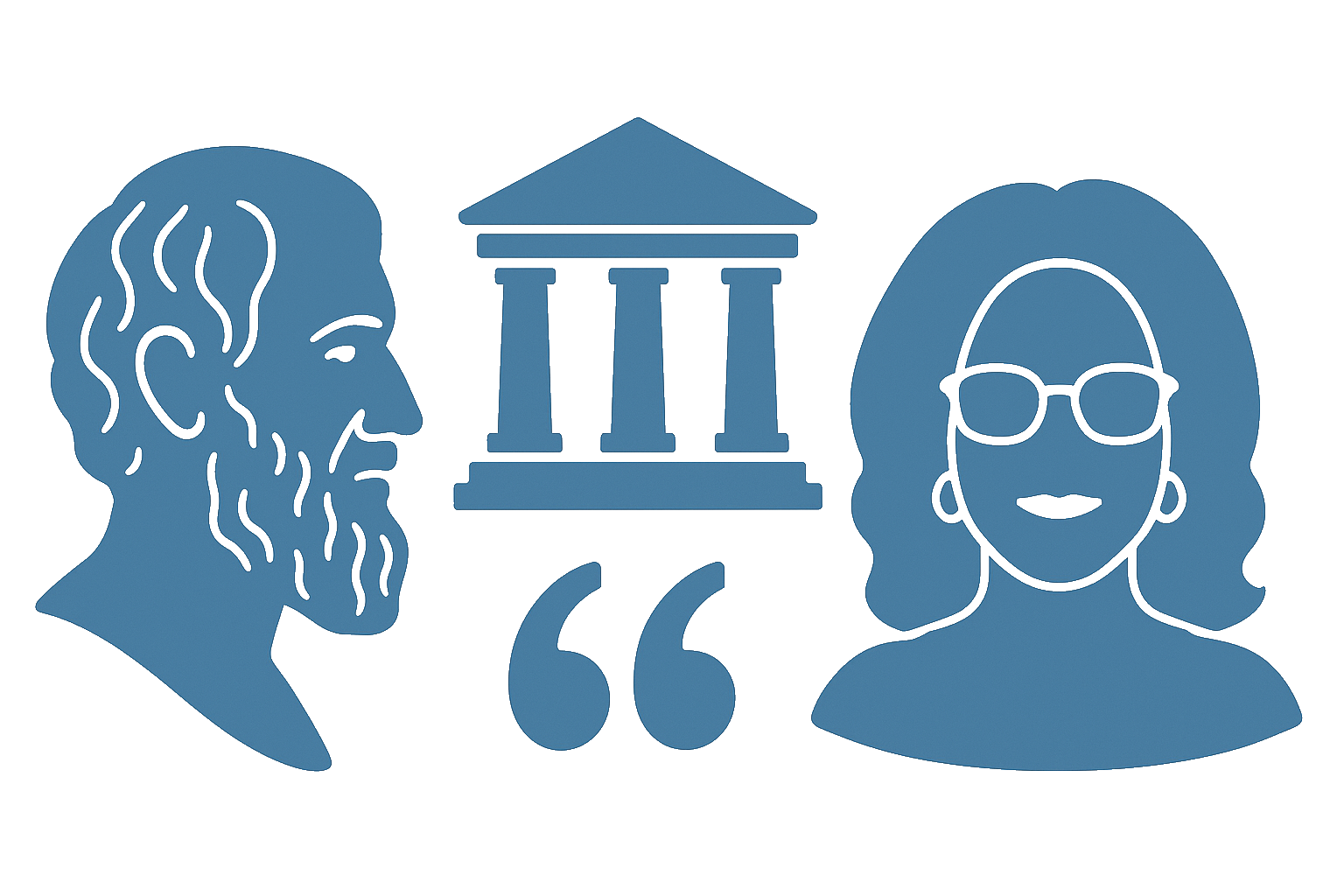Quick Overview
In today’s digital landscape, a solid online reputation is one of the most valuable assets for any business or individual. It’s more than just image management; a positive online reputation attracts clients, builds trust, and differentiates you from competitors. Content marketing is one of the most effective ways to build and sustain this reputation. This article unpacks the essentials of using content marketing to craft a lasting online presence, with best practices in content creation, consistency, engagement, and proactive reputation monitoring.
![]()
Common Questions & Answers
Q: Why is content marketing important for reputation?
A: It builds your brand's authority, fosters trust, and helps you connect authentically with clients or followers.
Q: How often should I publish new content?
A: Consistency is key. Find a manageable schedule, like weekly or bi-weekly, to stay on your audience’s radar and sustain engagement.
Q: Can content marketing really boost SEO?
A: Yes! High-quality, optimized content helps your website rank higher on search engines, drawing organic traffic and enhancing brand visibility.
![]()
Step-by-Step Guide
-
Identify Your Target Audience
Define your target audience’s needs, pain points, and preferred content formats. This ensures that your content resonates with them, making them more likely to trust and engage with your brand. -
Choose the Right Platforms
Decide where your audience is most active. Tailor content for each platform's style and audience expectations, whether it’s a website, LinkedIn, Instagram, or another platform. -
Create Consistent, High-Quality Content
Use various formats like blog posts, videos, infographics, and podcasts to maintain engagement. Prioritize quality over quantity; a single insightful piece weekly can be more impactful than frequent, lower-quality posts. -
Optimize for SEO
Use targeted keywords, meta descriptions, and backlinks to help search engines rank your content. This increases your reach and builds authority over time, attracting a steady stream of new readers. -
Engage with Your Audience
Actively respond to comments, ask questions, and initiate discussions to show that you value audience input. Engagement fosters trust and encourages a sense of community. -
Monitor Your Online Presence
Set up Google Alerts for your brand and engage on review sites to keep tabs on brand perception. Actively managing your reputation by promptly addressing both positive and negative feedback helps sustain trust.
Historical Context
Content marketing has evolved alongside technological advancements and changing consumer habits. The roots of content marketing date back centuries, but one iconic example is Benjamin Franklin's Poor Richard’s Almanack, an annual publication designed to market his printing business. By offering valuable tips and insights, Franklin built a broad readership and a solid reputation. In the early 20th century, Jell-O introduced the now-famous recipe book, strategically giving it away for free to attract new customers. This approach solidified Jell-O’s reputation in American households and demonstrated the power of educating and engaging consumers through content.
With the advent of the internet, content marketing became a more dynamic practice. Digital platforms allowed brands to reach global audiences directly and to evolve from merely selling products to offering valuable, shareable information. Today, content marketing not only attracts new customers but also builds long-term relationships by positioning brands as trusted sources of knowledge and innovation. It has become central to online reputation management, especially as customers seek authentic, knowledgeable voices in an era of information overload.

Business Competition Examples
-
HubSpot
HubSpot has established itself as a leader in marketing, sales, and customer service through its comprehensive blog. By providing free resources, guides, and templates, HubSpot has cultivated a reputation for being a trusted resource in the industry. This content-based approach has not only strengthened customer loyalty but has also driven consistent organic traffic, helping HubSpot stay top-of-mind for industry professionals. -
Glossier
Beauty brand Glossier built an online reputation through customer-centered content, especially by encouraging and sharing user-generated photos, reviews, and testimonials. By celebrating real customer stories and experiences, Glossier established itself as a transparent and community-focused brand. This authentic engagement strategy has resonated deeply with its audience, fostering strong loyalty and trust. -
Buffer
Buffer’s transparent company culture is reflected in its blog, where it shares internal metrics, company challenges, and social media strategies. By offering open insights, Buffer has created a sense of honesty and reliability, bolstering its online reputation. Its educational content on social media management further strengthens its standing as an industry expert, attracting a loyal following and enhancing brand credibility.

Discussion
Content marketing has redefined the way brands communicate with their audiences. It’s no longer just about pushing information; it’s about building genuine connections and adding value to people’s lives. Through content marketing, businesses have the power to cultivate authenticity, showcase expertise, and foster trust—all essential elements of a strong online reputation. A well-planned content strategy helps brands evolve from being mere service providers to authoritative voices in their fields.
Additionally, content marketing allows brands to be proactive in reputation management. Instead of simply reacting to feedback, businesses can use content to preemptively address industry trends, answer customer questions, and showcase thought leadership. This proactive approach fosters credibility and helps brands stay relevant. Companies that master the art of engaging, informative content can build lasting relationships with their audience, creating a loyal community that feels personally connected to the brand. Content marketing thus serves as a bridge between a brand and its audience, strengthening reputation through continuous, valuable engagement.

The Debate
In Favor of Content Marketing for Reputation
Advocates see content marketing as essential for building a trustworthy and long-lasting online reputation. By providing consistent, valuable information, brands can educate and engage with their audiences, establishing a loyal following. Content marketing builds relationships rather than merely selling products, creating an emotional connection that enhances brand loyalty and trust over time.
Skeptics’ View on Content Marketing
Skeptics argue that content marketing requires substantial time and resources, and the results may not be immediate. For brands looking for quick results, content marketing might seem like a slow-moving strategy. Some also believe that while content marketing builds reputation, it should be supplemented with other tactics like influencer partnerships and paid ads for faster visibility. However, unlike paid ads, content marketing yields lasting engagement and trust that is harder to achieve through other methods.

Takeaways
-
Consistency Fosters Trust
A consistent publishing schedule demonstrates reliability and dedication to providing ongoing value, which helps establish trust. Building trust takes time, and content marketing allows brands to stay top-of-mind by regularly appearing in their audience’s feeds or search results. This familiarity builds a strong foundation for a positive reputation, as audiences associate consistent content with a dependable brand presence. -
Audience Engagement Builds Relationships
When brands interact with their audience, they show that customer voices are heard and valued. Engagement—whether through comments, messages, or interactive polls—strengthens the customer-brand relationship, making followers more likely to support, recommend, and return to the brand. This kind of relationship-building is critical to maintaining a strong online reputation and fostering a sense of community around your brand. -
SEO-Optimized Content Extends Reach
SEO is essential for visibility and reach, especially in competitive markets. By optimizing content with targeted keywords, links, and meta descriptions, brands increase their chances of ranking well in search engines. High rankings attract organic traffic, which enhances the brand’s visibility and increases the potential for audience engagement. This visibility contributes to long-term growth for the brand and solidifies its position as a trusted authority. -
Monitoring Feedback Shows Dedication to Improvement
Proactively monitoring and responding to feedback shows that a brand values its audience’s opinions and is committed to improving. Addressing negative feedback can transform potential damage into positive outcomes by demonstrating customer-focused values. This approach not only protects but enhances the brand’s reputation, establishing it as attentive and responsive.

Potential Business Hazards
-
Overlooking Negative Feedback
Dismissing or ignoring negative feedback can seriously harm a brand’s reputation. Unanswered complaints give the impression of a brand that doesn’t care, which damages trust and alienates potential customers. Actively addressing negative feedback, however, can help mitigate damage and showcase a commitment to customer satisfaction, turning a potentially negative experience into a positive resolution. -
Prioritizing Quantity over Quality
Publishing frequent but low-quality content dilutes a brand’s message and authority, ultimately leading to audience disengagement. If content is irrelevant or poorly crafted, it risks alienating rather than engaging the audience. High-quality, thoughtfully produced content signals expertise and dedication, sustaining audience interest and building a robust online reputation over time. -
Neglecting SEO Optimization
Failing to optimize for SEO is a missed opportunity for visibility and reach. Without optimization, even excellent content can go unnoticed, hindering the brand’s growth. By using relevant keywords, structured meta descriptions, and quality links, brands ensure their content reaches a wider audience, increasing brand awareness and supporting a positive reputation over the long term.

Myths and Misconceptions
-
“More content means better results.” Quality over quantity is essential. Thoughtful, well-crafted pieces resonate more deeply with audiences than an overload of low-value content. Strategic, high-quality content positions your brand as an authority, while too much low-quality content can confuse or frustrate readers.
-
“Content marketing is only for large brands.” Small businesses can benefit immensely from content marketing. By creating tailored, targeted content, even smaller brands can attract a niche audience and cultivate a reputable online presence.
-
“Once content is published, the job is done.” Content should be periodically reviewed and updated to ensure it stays relevant. Repurposing or refreshing older content can attract new viewers and re-engage existing audiences, helping to maintain a strong online presence.

Book & Podcast Recommendations
- Book: Everybody Writes by Ann Handley – A guide for creating valuable, audience-focused content that builds brand reputation.
- Podcast: Marketing Over Coffee – Insightful podcast on practical content marketing strategies for enhancing online reputation.
- Book: Contagious: How to Build Word of Mouth in the Digital Age by Jonah Berger – Covers effective, shareable content creation that boosts brand trust and visibility.

Legal Cases
-
Perez v. LinkedIn (2014)
This lawsuit over false endorsement claims illustrates the importance of transparent content and managing online reputation carefully to avoid misleading representations. -
YouTube v. Viacom (2010)
This case highlights the importance of copyright compliance in content sharing. Original, legally-sourced content is essential for a trustworthy brand reputation. -
Yelp, Inc. v. Hadeed Carpet Cleaning, Inc. (2014)
Centered on the validity of online reviews, this case underscores the importance of managing customer feedback and reviews as they impact brand reputation directly.

Wrap Up
Crafting a positive online reputation through content marketing is a powerful, long-term strategy that can foster loyalty, trust, and credibility. With consistent, high-quality content, audience engagement, SEO optimization, and active feedback management, you can establish your brand as a trusted leader in your industry. A solid online reputation attracts clients, builds connections, and sets you apart—commit to these strategies, and watch your influence and reach grow.











